A risky business – but not for traffickers
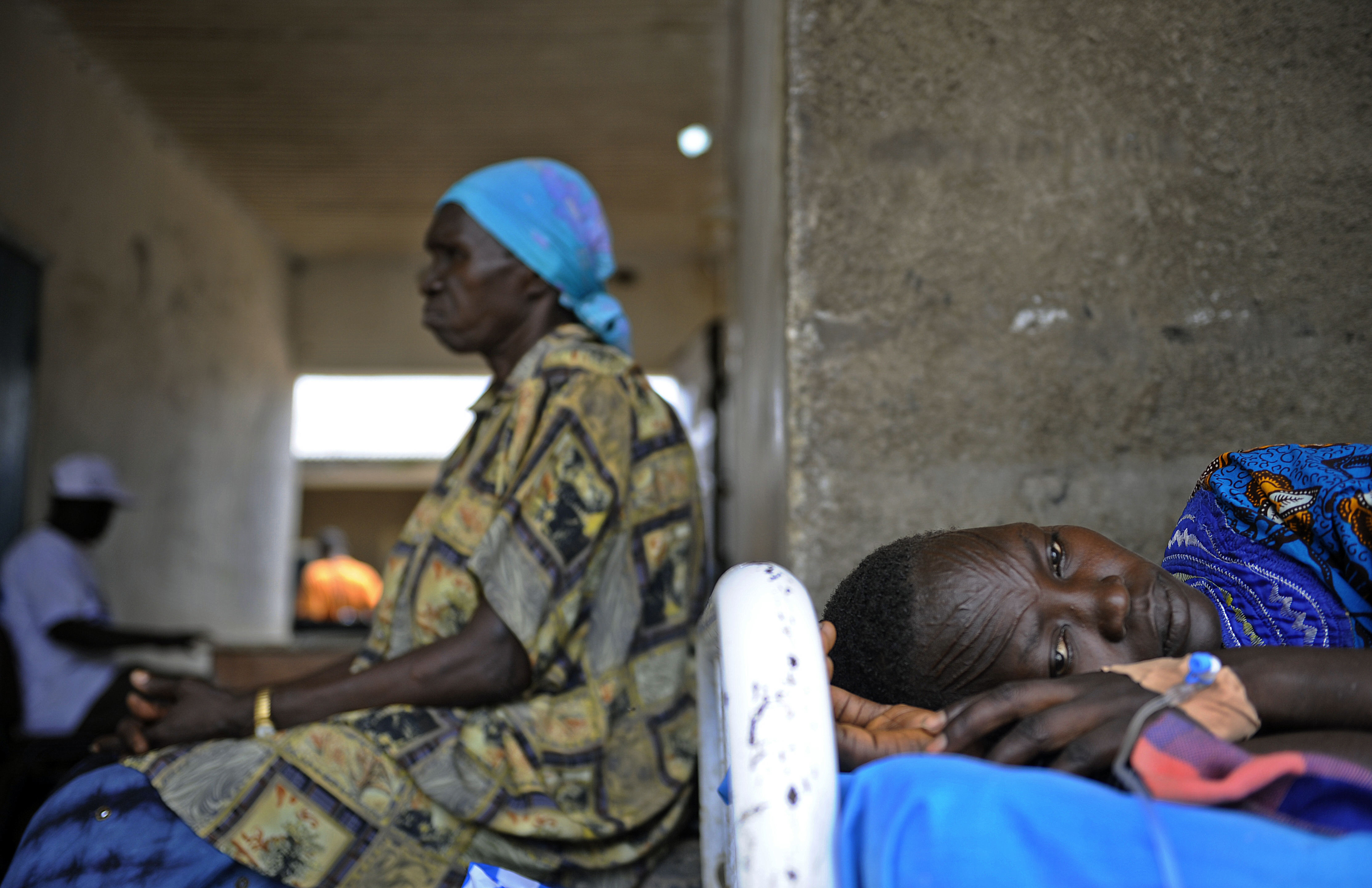
Fake Viagra in rich countries. Fake antibiotics and anti-malaria drugs that cost hundreds of thousands of lives in poor countries. The market in counterfeit drugs is flourishing throughout the world.
“In the 80 countries we work in, we are dealing every day with individuals and entire families who get into debt to buy fake medicines. And the terrible thing is that often these medicines damage their health or kill them, without them even realising it,” says Guillaume Schmidt, a pharmacist who works for the Swiss section of Médecins Sans Frontières (MSF).
In most cases, he explains, the medicines do not contain any active ingredient at all: “It may be just water and corn starch.” In other cases, the drugs have insufficient or inappropriate ingredients, or a lot of impurities. In the end it amounts to the same thing.
On a world scale, victims of trafficking in fake medicines are thought to number half a million to a million people per year.
“The problem of fake medicines is often regarded as a simple matter of fraud, the counterfeiting of patent products. In reality, we are dealing with a criminal business on a global scale which is leading to a massacre of the innocents. I think the time has come to bring pressure to bear on the politicians, so that measures are taken at the international level,” says Schmidt.
According to the World Health Organization (WHO), 10% of medicines sold world-wide are fake.
The rate is on average about 30% in developing countries, whereas in industrialised countries only 1% of drugs in circulation are counterfeit.
The illegal market for medicines has an annual turnover of about $75 billion, having increased by 90% between 2005 and 2010.
WHO believes that every year malaria 200,000 deaths could be avoided if the cases were treated with non-counterfeit medicines.
In total, fake medicines are thought to cause between 500,000 and 1 million deaths per year.
Estimates are conservative
The fatalities are mostly linked to the sale of fake antibiotics and fake drugs to treat malaria, tuberculosis and Aids. But the issue of counterfeiting now affects all drugs. According to the World Health Organization (WHO), ten per cent of the medicines on sale in the world are fake, and the figure reaches at least 30 per cent in poor countries.
“These are minimum estimates based on data gathered in a number of countries”, notes Schmidt.
“I believe myself that if more in-depth studies were carried out on a world scale, we would be astounded by the results and we would be seeing much faster action by states and international organisations.”
Again according to WHO data, the world market for counterfeit medicines has a turnover of up to $75 billion (SFr68.6 billion) a year. This is a market that increasingly attracts drug traffickers too.
“Just as in the case of narcotics, production of medicines is based on chemical know-how. What’s more, the returns are much higher and the risks are really minor,” explains Schmidt.
Insufficient controls
The traffic in fake medicines is facilitated in many countries by the partial or total absence of pharmaceutical controls, Schmidt says.
“The registration processes for drugs are only a matter of paperwork: almost no products are actually tested. The authorities and health agencies often do not have the funds available to do it.”
In many countries, people do not have health insurance, nor is there an adequate network of medical and pharmaceutical services. Most medicines are bought from travelling salesmen or at the market. They usually cost less, but are all the more likely to be fakes.
“Counterfeiting is not done just for the black market or parallel markets. Fake medicines have now also got a foothold in legal public and private networks, laboratories and hospitals”, Schmidt says. For this reason, MSF relies as much as possible on drugs originating from its own three global centres.
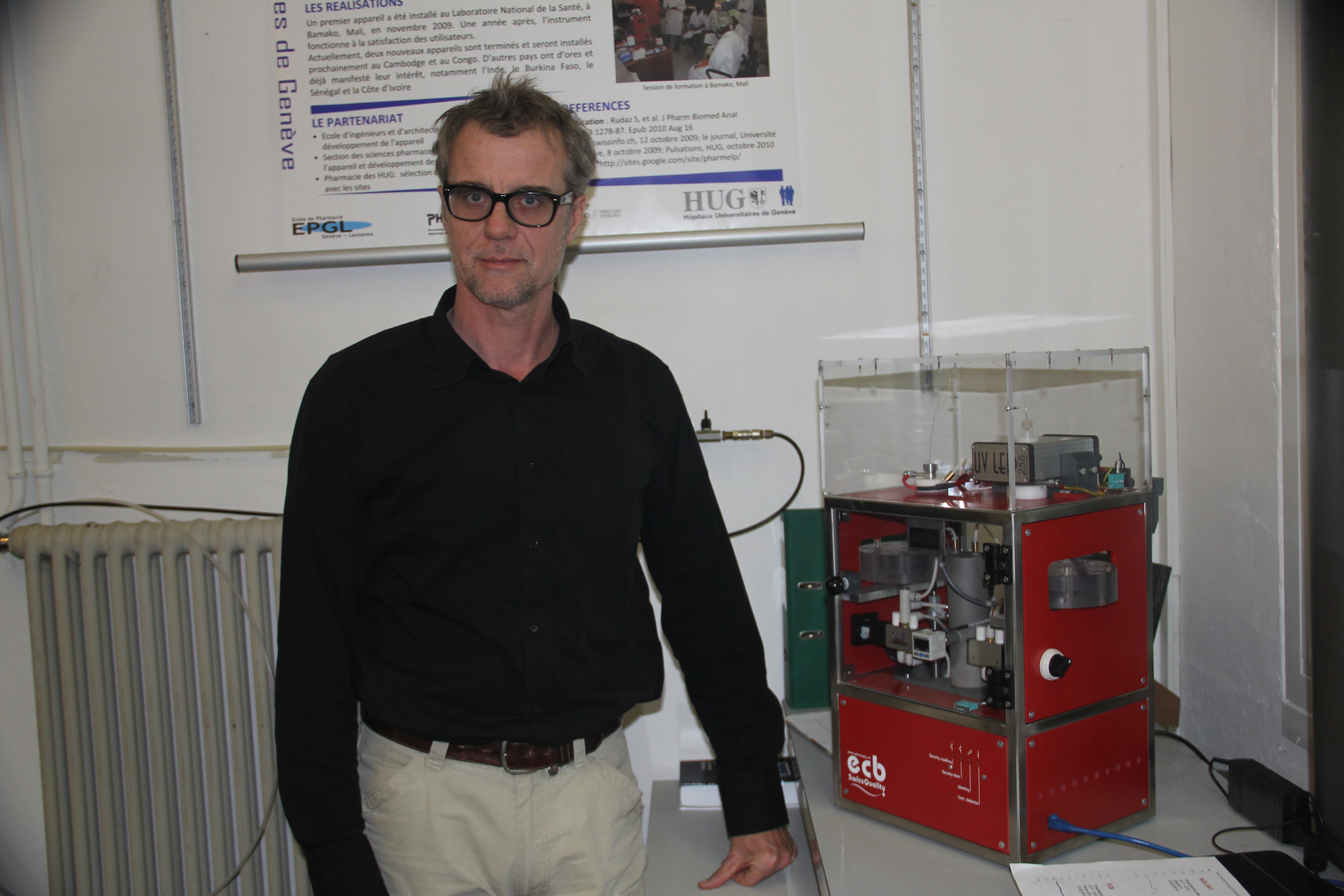
More
Swiss technology battles fake drugs
Risks at home too
Although the problem is particularly dramatic in developing countries, the industrialised countries are now affected as well. This has come about almost exclusively as a result of sales via the internet of “lifestyle” products that are banned or else require a doctor’s prescription: pills to heighten sexual performance or lose weight, hormones, anabolic steroids, performance enhancers, and psychotherapeutic drugs.
“Over half these products are fake or of very low quality,” says Ruth Mosimann, who is in charge of the control of illegal medicines at Swissmedic, the official agency that supervises therapeutic products.
“Thanks to public awareness campaigns we have succeeded in recent years in preventing an increase in the volume of orders. But even today, many people in Switzerland do not realise the risks they run in buying these products from online pharmacies that are almost always illegal and do not even have an address.”
The risks to health are many: kidney failure, liver damage, allergies, cardiovascular ailments, and psychiatric problems. It is difficult for the authorities to crack down: every year about 50,000 illegal shipments of drugs arrive in Switzerland, coming from about 60 countries – in particular from India and elsewhere in Asia, but also from Europe.
A first step
The problem crosses borders and thus needs action at an international level. So far only the Council of Europe has adopted a convention to combat the traffic of fake medicines, known as the Medicrime Convention. This 2011 document, which is not binding, has been signed by about 20 countries, including Switzerland.
Once ratified by parliament, the convention should lead to a toughening of legislation in Switzerland.
“The objective would be to introduce penalties for trafficking in fake medicines equivalent to those that apply to drug trafficking”, Mosimann explains.
Achieving this goal, however, will take a number of years. And even then, the effect will be limited without a toughening of criminal sanctions at the international level.
“Currently, every country is trying to deal with the problem alone, and almost everywhere trafficking in fake medicines is only punished with fines, which does little to discourage the people concerned, given the amount of money they are making,” Schmidt points out.
“Looking at it from this perspective, the traffickers still have prosperous times ahead of them.”
As with most other industrialised countries, the traffic in fake medicines in Switzerland almost exclusively involves sales from abroad via the internet.
Among medicines confiscated in 2010 by Swiss customs were sex-related drugs (33%), products for slimming (19%) and increasing muscle mass (9%), sleeping pills and other potentially addictive drugs (6%).
Most of the shipments came from India (45%), other Asian countries (9%) and Europe (19%).
(Translated from Italian by Terence MacNamee)

In compliance with the JTI standards
More: SWI swissinfo.ch certified by the Journalism Trust Initiative
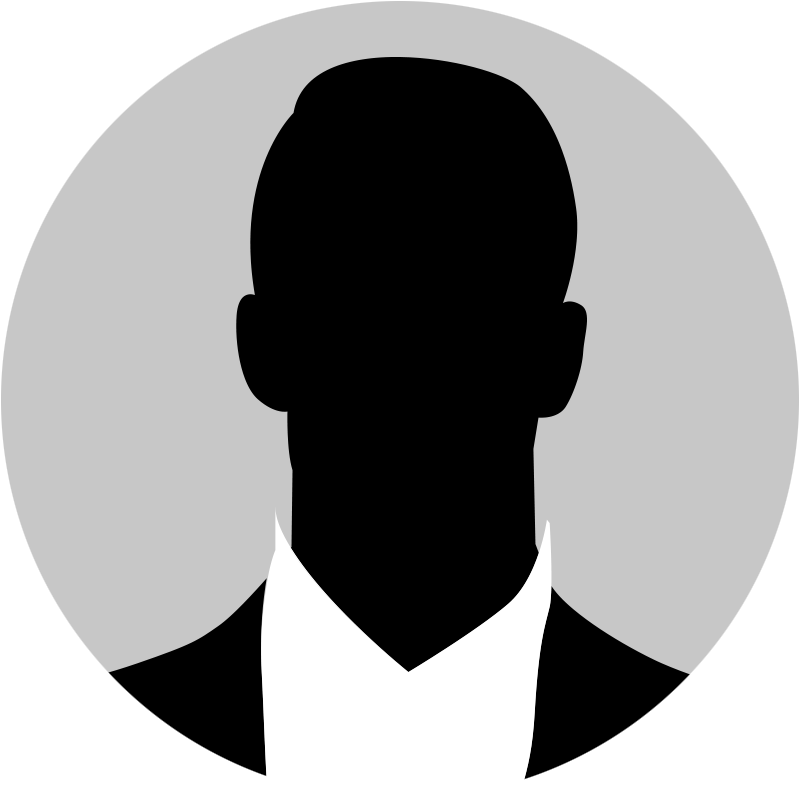
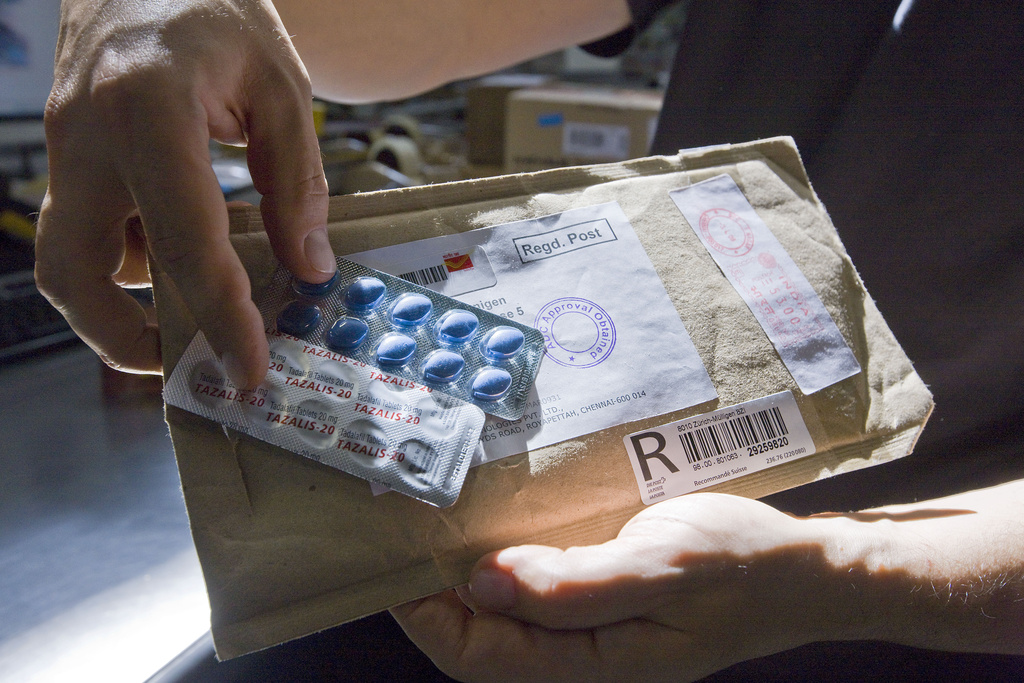
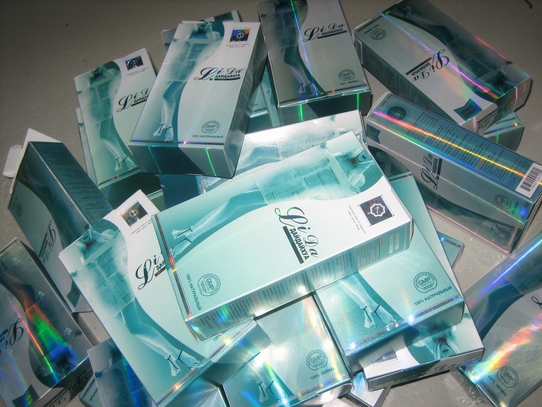
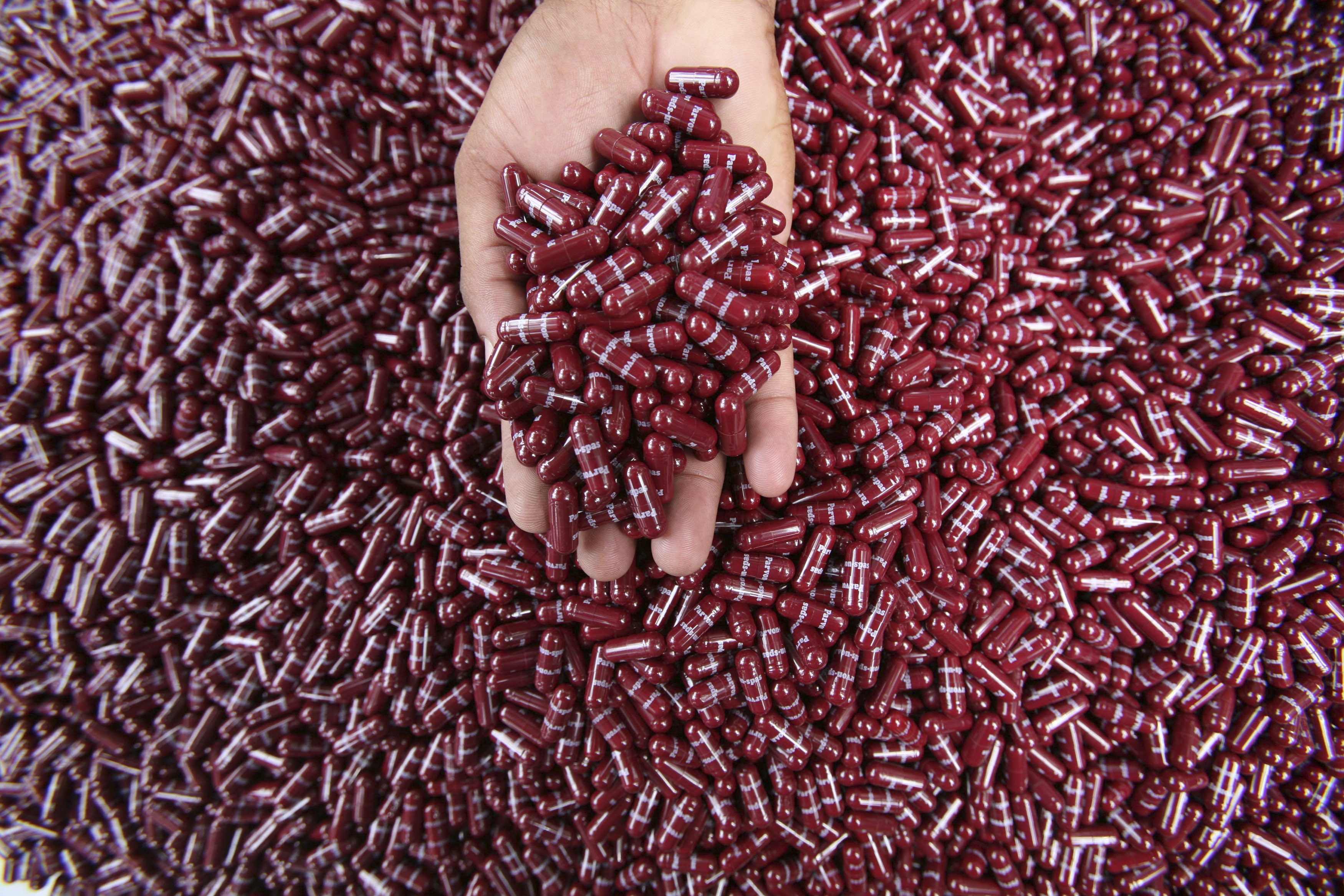
You can find an overview of ongoing debates with our journalists here. Please join us!
If you want to start a conversation about a topic raised in this article or want to report factual errors, email us at english@swissinfo.ch.